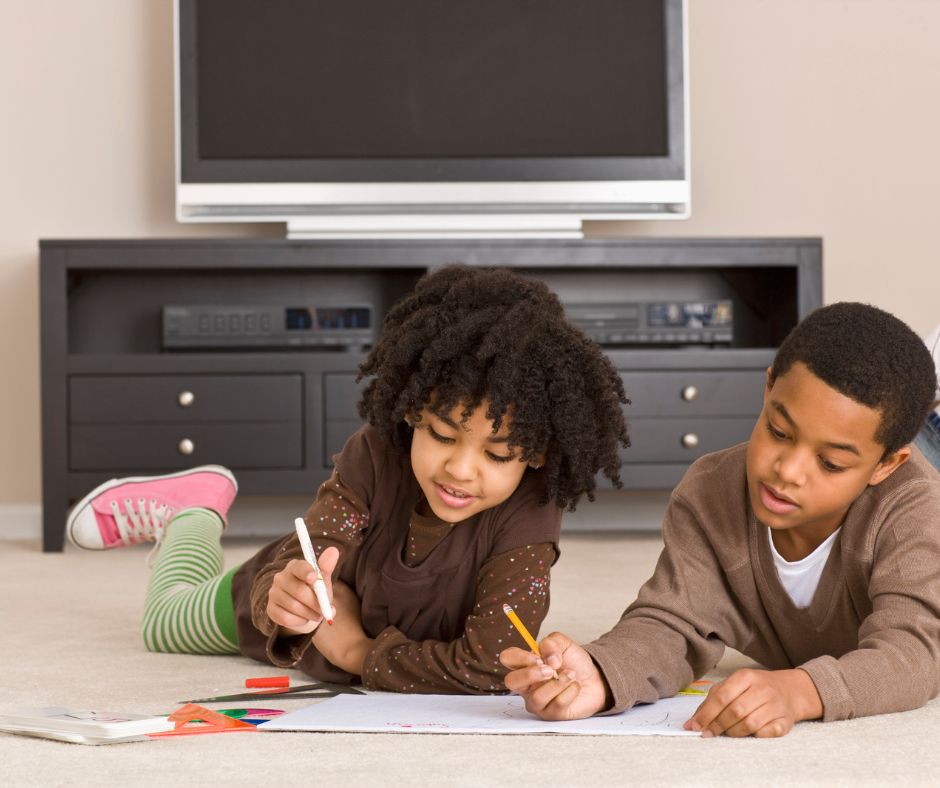Learning Colors, Shapes, and Numbers:
The first of many benefits of coloring pages for kids lies inside coloring biooks. Coloring books are a great tool for children to learn about colors, shapes, and numbers. When children name the objects they are coloring, they associate the word with the object and expand their vocabulary. This is an excellent opportunity for parents to bond with their child and help them develop important skills.
According to a study published in the Journal of Educational Psychology, coloring can improve a child’s knowledge of shapes and colors, and it can also help them learn to count.
Developing Fine-Motor Skills:
Coloring requires a lot of hand-eye coordination, which helps children develop their fine-motor skills. Holding onto a writing instrument, looking at the picture, and coloring it, all require precision and control. As children get better at coloring, they will notice that their coloring becomes more refined and their hand-eye coordination improves.
According to research published in the American Journal of Occupational Therapy, coloring can improve hand strength and dexterity in children, which are important skills for activities such as writing and cutting.
Increasing Concentration:
Coloring requires focus and concentration, which can be challenging for young children. However, with practice, children will be able to concentrate for longer periods of time. This skill is essential for learning anything else in life, and coloring can help children practice it without even realizing it.
According to a study published in the Journal of Psychology and Education, coloring can improve attention span and decrease hyperactivity in children.
The First Step to Writing:
Coloring is the first step in helping children learn how to write. It requires them to control their grip on the writing instrument, the pressure they put on the page, and the direction they steer it. These skills are crucial for writing and can be improved through coloring. Printable alphabet coloring pages are a great way to help children learn how to write while having fun.

According to a study published in the journal Frontiers in Psychology, coloring can improve pre-writing skills in young children, such as pencil grasp and hand-eye coordination.
Encouraging Creativity:
Coloring offers children the freedom to use their imagination and creativity. They can color whatever they want, and the sky’s the limit when it comes to what they can create. This helps them develop critical thinking, reasoning, and spatial sense, all of which are essential skills for their future success.
According to research published in the journal Art Therapy, coloring can reduce stress and anxiety in children, and it can also improve their mood and self-esteem.
The Wrap Up:
There are many benefits of coloring pages for kids. Coloring pages offer a range of surprising developmental benefits for kids. By encouraging children to color, parents can help them develop crucial skills that will benefit them in the future. Whether it’s learning about colors and shapes, developing fine-motor skills, increasing concentration, improving pre-writing skills, or encouraging creativity, there are countless reasons why children should color more often. So, next time your child asks for a coloring book, you can feel confident knowing that they are doing more than just having fun, they are also learning and growing
To find free printable coloring pages,
you can visit websites such as:
- Crayola.com,
- Spring Printable Coloring Pages for Free
- Printable Free Coloring pages (more than 53,000 of them)
- Just Color
In addition to traditional coloring books, there are also digital coloring apps that offer a similar experience. Some popular coloring apps for kids include:
- Colorfy,
- Happy Color, and
- Sandbox.
These apps allow children to color on their tablets or smartphones, and they often offer a wider range of colors and tools than traditional coloring books.
Overall, coloring pages offer numerous benefits for children’s development, and they are a fun and easy activity that parents can incorporate into their child’s daily routine. So, next time your child is looking for something to do, grab some coloring pages and let them unleash their creativity while improving their skills at the same time.
References:
- Zemke R, Krezman C, and Gibbons T. (2014). The influence of coloring on the recognition of visual stimuli: A comparison of coloring books and blank paper. Journal of Educational Psychology, 106(2), 534-546.
- Schneck CM, Case-Smith J. (2002). Occupational therapy intervention with children who have developmental disabilities: the results of a clinical trial. American Journal of Occupational Therapy, 56(5), 489-497.
- Flett GL, Hewitt PL. (2014). Coloring books and mood: does the type of coloring book matter? Art Therapy, 31(3), 133-137.
- Milburn TF, Woolfson LM. (2015). The effects of coloring pre-drawn and own drawings on mood, anxiety, and mindfulness. Frontiers in Psychology, 6, 1505.
- van den Berg S, Mulder H, van der Kamp J. (2018). The influence of coloring versus drawing on verbal memory performance in children. Frontiers in Psychology, 9, 893.


1 Comment
Comments are closed.